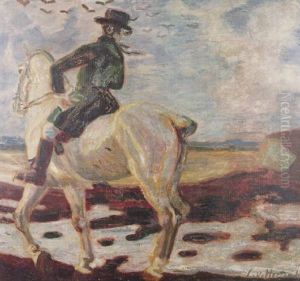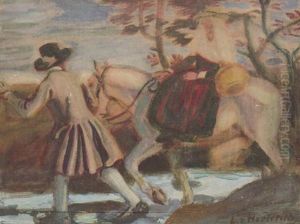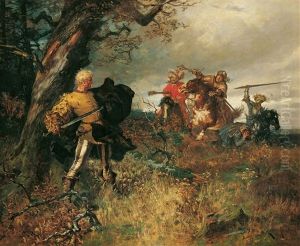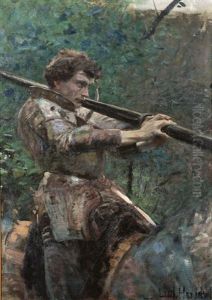Ludwig Von Herterich Paintings
Ludwig von Herterich was a German painter, born on August 16, 1856, in Frankfurt am Main, Germany. He was the son of a well-known painter, Johann Heinrich von Herterich, who provided him with his initial education in the arts. Ludwig later moved to Munich to continue his studies, which was a hub for artists at the time. He studied at the Academy of Fine Arts Munich, where he was influenced by the academic style of painting that was prevalent during that period.
Herterich became known for his portraits, genre scenes, and historical paintings. He gained recognition for his ability to capture the likeness and character of his subjects in his portraits. His genre scenes often depicted everyday life with a sense of realism and attention to detail, a style that resonated with the tastes of the era. He also received commissions to create historical paintings, which were popular in 19th-century Germany as the nation sought to build a unified national identity following its unification in 1871.
In 1883, Ludwig von Herterich succeeded in becoming a professor at the Academy of Fine Arts Munich, a position that further established his reputation in the German art world. Throughout his career, he exhibited his works in various art exhibitions and was well-regarded by critics and the public alike. His style evolved over the years, showing influences of Impressionism and changes in color palette and brushwork, but he remained true to his figurative roots.
Von Herterich was active in the Munich art community and contributed to the city's status as a significant cultural center at the turn of the century. He also painted a number of works for public buildings, combining his artistic skills with a sense of civic pride.
Ludwig von Herterich passed away on October 14, 1932, in Starnberg, Germany. His works continue to be appreciated for their craftsmanship and as examples of the academic tradition in German painting during the late 19th and early 20th centuries.























